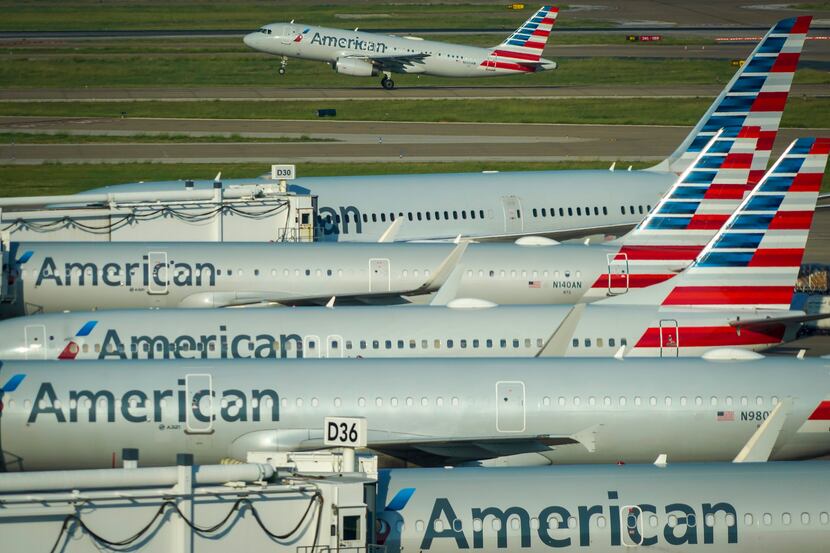Southwest Airlines’ pain has been American Airlines’ gain.
In a nod to the cancellation meltdown that cross-town rival Southwest Airlines faced in late December, American Airlines CEO Robert Isom said Thursday that the Fort Worth-based carrier is “doubling down” on investments in its team and technology, even after ranking first in completion factor during the tumultuous holiday stretch.
On Thursday, American Airlines reported its first full-year profit since 2019 and a strong start to post-holiday bookings.
“This is our best ever post-holiday booking period with broad strength across all entities and travel periods,” said Isom on the company’s quarterly financial results call. “Demand for domestic and short-haul international travel continues to lead the way. We expect a strong demand environment to continue in 2023 and anticipate further improvements in demand for long haul international travel this year.”
The same can’t be said for Dallas-Fort Worth’s other major carrier, Southwest Airlines. Dallas-based Southwest reported it now expects to take a first-quarter loss as well due to lower bookings for January and February travel, which will cost it another $300 million to $350 million in the quarter.
Southwest’s December 2022 holiday meltdown will go down as one of the biggest debacles in its 51-year history. Nearly 3 million passengers had flight segments canceled.
Isom said American made sure it had staffing to fly the schedule it put out during the holidays.
“We spent a tremendous amount of time investing in technology to make sure that we can identify where our crews and our planes and our maintenance requirements are,” Isom said.
American expects to expand, with first-quarter flying capacity up as much as 10% year-over-year and up 8% for all of 2023, according to a regulatory filing. The carrier’s full-year revenue was just under $50 billion, a 64% increase over 2021. Its annual profit totaled $127 million compared with a loss a year ago.
American’s results add to the picture of strong demand for air travel. United Airlines’ year-end profit totaled $843 million, while Delta Air Lines reported $828 million in net income.
Southwest is under investigation by the Department of Transportation over whether its holiday fiasco was caused by overscheduling flights. It appears that customers haven’t been quick to forget as Southwest said it “has experienced an increase in flight cancellations and a deceleration in bookings, primarily for January and February travel, which are assumed to be associated with the operational disruptions in December 2022.”
American has changed a lot of its processes and procedures for managing storms, said chief operating officer David Seymour.
“We have to stay in front of (these events),” Seymour said. “But more importantly is the recovery. We started looking at the forward-look of what the storm potentially could be and started building our recovery plan before the storm hit.”
Vasu Raja, American’s chief commercial officer, said he doesn’t see “any recognizable benefit from what other airlines are doing.”
“For us, it really is as simple as when we go put the flights in places people want to go and operate it well, the bookings come, the revenue materializes,” Raja said. “There’s really not a lot of facts that we can point to beyond that very simple truth.”
American’s reaction mirrored what United Airlines CEO Scott Kirby said last week during the Chicago-based airlines’ year-end call, noting that “ industry capacity aspirations for 2023 and beyond are simply unachievable.”
“We had our own challenges over a year ago during Christmas of ‘21,” said Kirby, a former president at American Airlines. “Omicron hit us all hard, but it also shone a spotlight on other strains in the system. We responded by proactively pulling down capacity. It was the only choice. You can’t change the engines on an airplane when it’s flying.”

